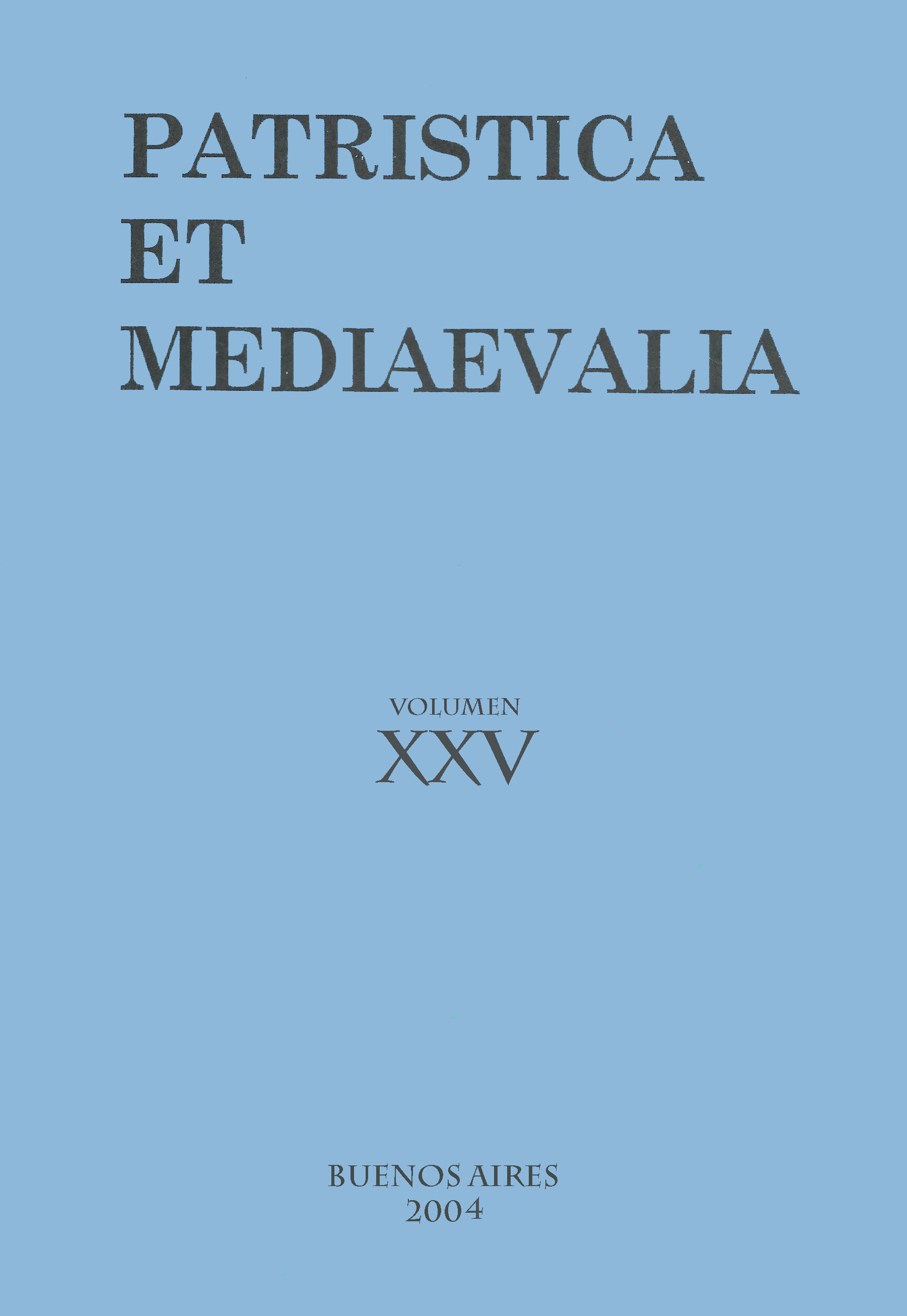“Nisi credideritis, non intelligetis” (Is. 7, 9) in Ramon Llull's Interpretation
Abstract
Certainly, the “artistic system” of Ramon Llull is an original method opening new perspectives in the scholastic system. But even though this is so, we have to know that every new “world” doesn't leave completely aside the topics and the rules of the old “world”: the old topics and rules will be present in the new system, but they will not be its leading features. A clear example for this is the treatment of the biblical quotation Is. 7, 9, in the interpretation of which Llull gives his personal opinion about faith and reason, a new point of view that certainly goes much further than his patristic and scholastic predecessors did.Downloads
References
Bonner, A. (1990). Ramon Llull and the Dominicans. Catalan Review, 4(1-2), 377-392.
Bonner, A. (1993). L’Art lulliana com a autoritat alternativa. Studia Lulliana, 33(1), 15-32.
Bonner, A. (1997). Ramon Llull i el rebuig de la tradición clàssica i patrística. En Homenatge a Miquel Dolc, Antes del XII Simposi de la Sección Catalana i I de la Sección Balear de la SEEC, Palma, 1 al 4 de febrero de 1996. Palma de Mallorca, 373-385.
Carreras Artau, T. & Carreras Artau, J. (2001). Historia de la filosofía española, Filosofía cristiana del siglo XIII al XV, 2 vols. Barcelona/Girona: Institut d’Estudis Catalans-Diputación de Girona (Primera edición: 1939, Madrid).
Cruz Hernández, M. (1977). El pensamiento de Ramón Llull. Valencia: Castalia-Fundación Juan March.
Garcías Palau, S. (1982). Ramón Llull y el Islam. Palma de Mallorca: Publicaciones de la Universidad de Navarra.
Hamamouche, F. B. (1995). Ramón Llull y el mundo islámico. Revue d’Histoire Maghrébine (époque moderne et contemporaine), 77-78, 113-125.
Hames, H. (1999). Conversion Via Ecstatic experience in Ramon Llull’s ‘Llibre del gentil e dels tres savis’. Viator, 30, 181-200.
Lohr, C. (1984). Christianus arabicus, cuius nomen Raimundus Lullus. Freiburger Zeitschrift für Philosophie und Theologie, 31, 57-88 (trad. al catalán: (1986) Ramon Llull: ‘Christianus arabicus’. Randa, 19, 7-34.
Oliver, A. (1965). El beato Ramón Llull en sus relaciones con la Escuela Franciscana de los siglos XIII-XIV. Estudios Lulianos, 9, 55-70/145-165.
Oliver, A. (1966). El beato Ramón Llull en sus relaciones con la Escuela Franciscana de los siglos XIII-XIV. Estudios Lulianos, 10, 47-55.
Oliver, A. (1967). El beato Ramón Llull en sus relaciones con la Escuela Franciscana de los siglos XIII-XIV. Estudios Lulianos, 11, 89-119.
Oliver, A. (1969). El beato Ramón Llull en sus relaciones con la Escuela Franciscana de los siglos XIII-XIV. Estudios Lulianos, 13, 51-65.
Pardo Pastor, J. (2004). Las auctoritates bíblicas en Ramón Llull: etapa 1304-1311. Revista Española de Filosofía Medieval, 11, 167-179.
Platzeck, E. W. (1964). Raimund Lull, Sein Leben, Seine Werke, Die Grundlagen seines Denkens, vol. II. Düsseldorf: Bibliotheca Franciscana (5-6).
Reinhardt, K. (1995). Ramón Llull und die Bible. En Domínguez, F., Imbach, R., Pindl, T. & Walter P. (eds.). Aristotelica et Lulliana magistro doctissimo Charles H. Lohr septuagesimum annum feliciter agenti dedicata. Steenbrugis, Instrumenta Patristica, 26, 311-331.
Urvoy, D. (1989). Vues musulmanes sur la personnalité de Ramon Llull. Studi Lullistica, Miscellanea in honorem Sebastiani Garcias Palou. Mallorca, 115-118.
Urvoy, D. (1990). La place de Ramón Llull dans la pensée arabe. Catalan Review, 4(1-2), 201-220.
Urvoy, D. (1994). L’idée de ‘christianus arabicus’. Al-Qantara, Revista de Estudios Árabes, 15, 497-507.
1. The authors who publish in this magazine accept the following conditions:
-
They retain the copyright and grant to the magazine the right of the first publication, with the work registered under the Attribution-ShareAlike 4.0 International License that allows third parties to use what is published as long as they mention the authorship of the work and the first publication in this magazine.
-
They can make other independent and additional contractual agreements for the non-exclusive distribution of the version of the article published in this magazine (eg. include it in an institutional repository or publish it in a book) provided that they clearly indicate that the work was first published in this journal.
-
They are allowed and recommended to publish their work on the Internet (for example on institutional or personal pages).
2. AutoArchive Conditions. Authors are allowed and encouraged to distribute post-print electronic versions of their manuscripts because it promotes their circulation, a possible increase of quotation and a major reach among the Academic community. Color RoMEO: blue.













